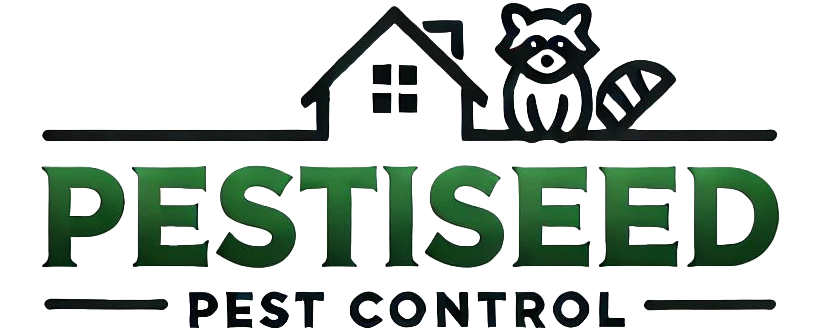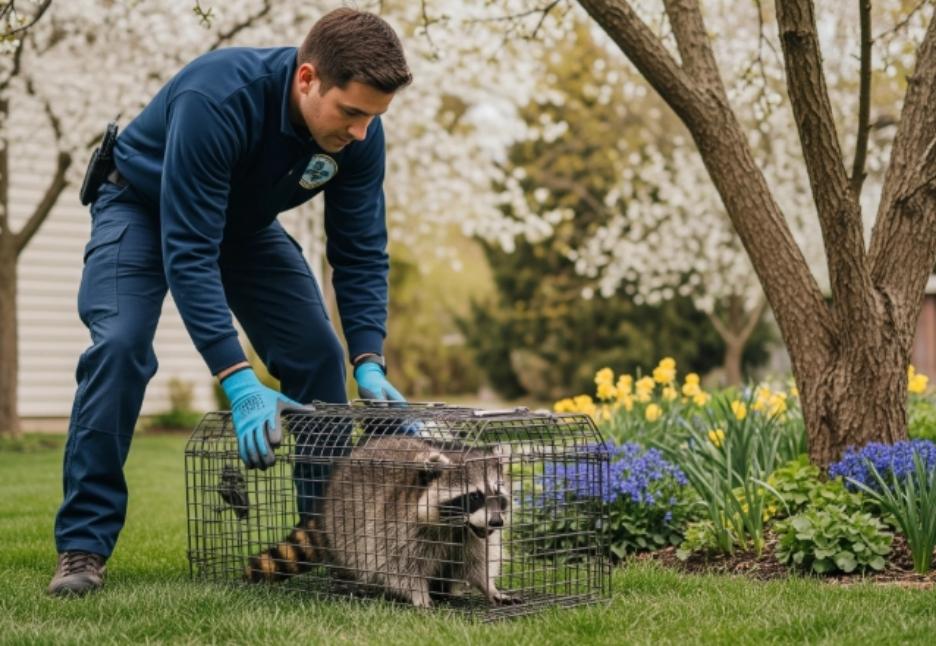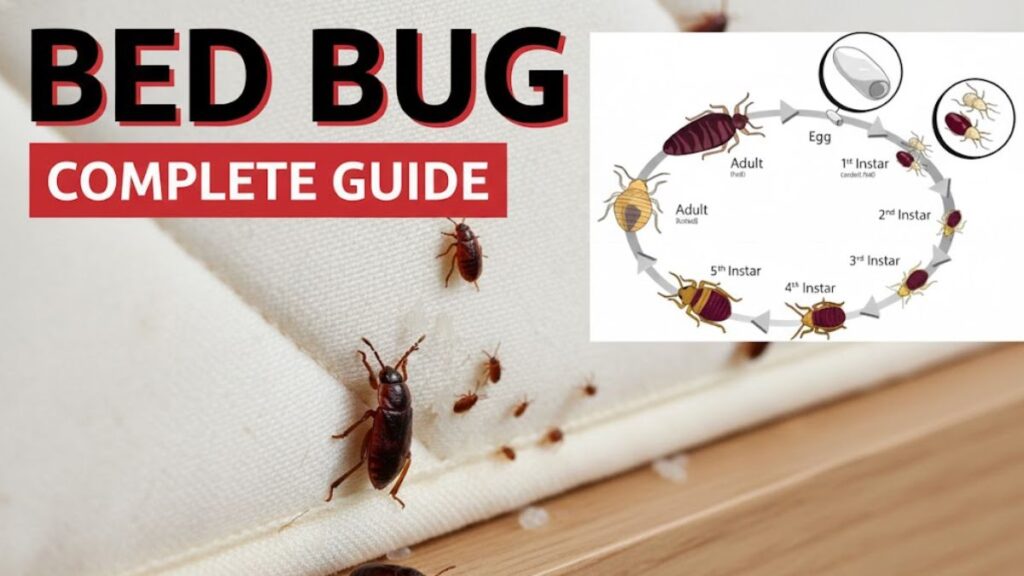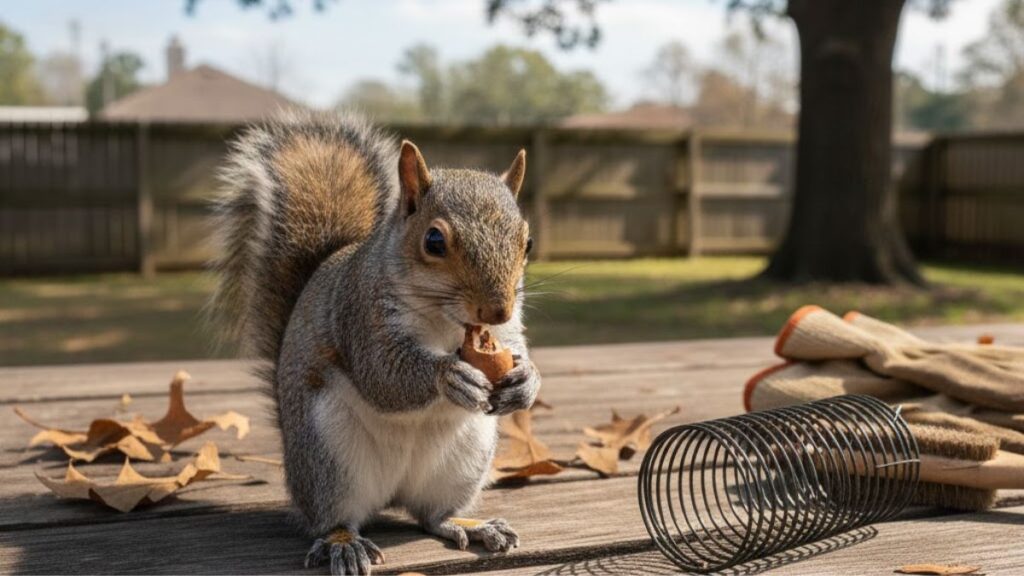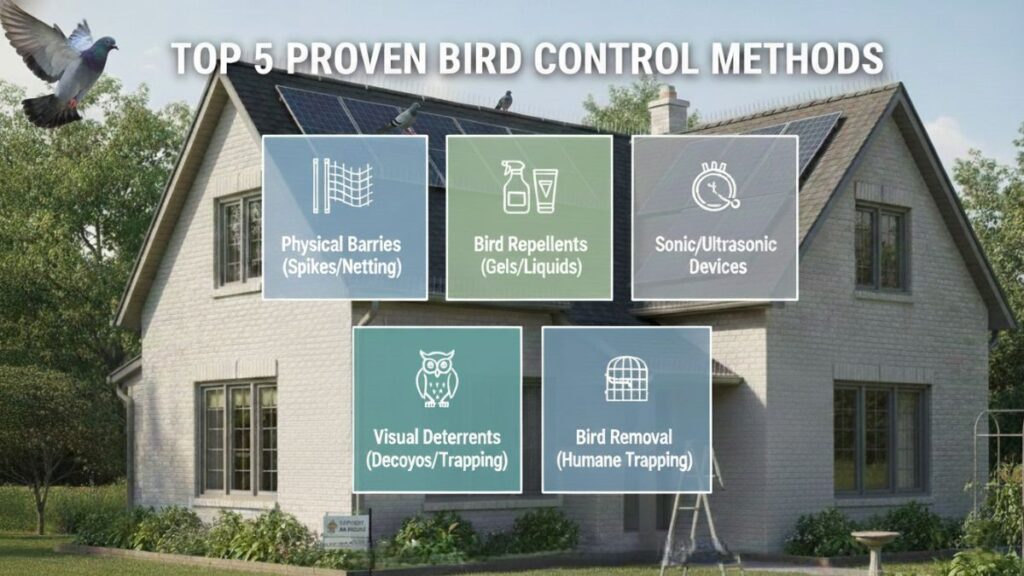Toronto properties face a growing raccoon infestation problem that’s getting worse each year. These urban raccoons are smart creatures who have figured out city life perfectly. Our licensed experts see the same pattern across the GTA every single day. Climate factors in Toronto create ideal conditions for these masked bandits. Summer heat drives them to seek cool shelter in attics and basements.
Food sources are everywhere in our neighborhoods. Garbage day becomes a weekly feast for hungry raccoons. Pet food left outside disappears overnight. Bird feeders turn into raccoon buffets. Fruit trees and gardens provide natural snacks. Compost bins smell like five star restaurants to these clever animals. Shelter opportunities are endless in the GTA’s dense housing. Old homes have loose roof tiles and broken vents. New builds often have gaps in construction. Chimneys without caps become perfect entry points. Decks and sheds offer ground level hideouts. Trees growing too close to houses create natural bridges. We’ve seen raccoons turn Toronto properties into their personal hotels with same day availability just not the kind homeowners want.
10 Warning Signs Of Raccoon Infestation
Night Time Noise Makers: Those Scary Sounds Above You
Raccoons make the loudest noise at night. We hear heavy thumping sounds like someone walking upstairs. Raccoon sounds are different from other pests. They scratch walls with their claws. Nocturnal activity starts around 9 PM and goes until 5 AM.
Attic noises wake up families across Toronto every spring. We find raccoons love warm areas under roofs. Listen for growling or chattering sounds too. These sounds mean raccoon activity is happening right above your head. Signs like this need quick action from licensed experts.
Roof Damage That Costs Big Money
Raccoons tear apart roofs to get inside homes. We see torn fascia boards on houses every day. Roof damage starts small but grows fast. Entry points appear around chimneys and vents first.
Structural damage from raccoons can cost thousands of dollars. These smart animals pry open weak spots with their strong paws. We check rooflines for loose shingles and broken areas. Raccoon entry points look like perfect round holes in your roof. Call our fast service team when you see fresh damage.
That Awful Smell Coming From Your Attic
Strong smells hit you when raccoons move in upstairs. Unpleasant smell comes from raccoon feces and old food scraps. Odors get worse during hot summer days. Smell travels through walls and makes whole rooms stink.
Raccoon feces creates serious health risks for families. We wear masks when cleaning up infestations because spores can make people sick. Strange smell means raccoons have been living there for weeks. Our safe solutions include complete odor removal. Same day availability helps stop smell from spreading through your home.
Garbage Chaos Every Morning
Raccoon problem shows up in your driveway each morning. We see scattered trash and tipped bins weekly. Trash bins become feeding stations for hungry raccoons. Food sources bring raccoons back night after night.
Smart raccoons remember which houses have easy meals. They teach baby raccoons the best food spots too. We help families buy raccoon proof trash bins that actually work. Prevention stops future raccoon invasions before they start. Our local trusted team knows which bins work best in Toronto weather.
Muddy Paw Print Evidence
Raccoon tracks look like tiny human handprints in mud. Paw prints show up on fences and deck railings. Footprints have five long fingers that are easy to spot. We measure raccoon tracks to tell big adults from babies.
Raccoon paw prints appear near entry points and food sources. Fresh tracks mean raccoons visited last night. We look for footprints on car hoods and garbage lids. Raccoon tracks in gardens show where they hunt for bugs. Our 5+ years experience helps identify different animal tracks quickly.
Dangerous Droppings in Dark Corners
Raccoon droppings carry diseases that make families sick. Feces piles up in attics and crawl spaces. Hidden spots become toilet areas for raccoon families. Dark corners collect the most raccoon feces over time.
Health risks from raccoon droppings include raccoon roundworm and other parasites. We never clean feces without protective gear. Contamination spreads through air vents to living areas. Safe solutions include complete sanitization after removal. Our 24/7 service handles emergency cleanups when kids find droppings.
Lawn Destruction Overnight
Raccoons dig perfect holes in grass looking for grubs. Lawn damage appears in small circles across yards. Property damage from digging can ruin expensive landscaping. We see torn twigs and scattered leaves around holes.
Raccoon families teach babies how to find food underground. Spots in lawns grow bigger each night they visit. Digging behavior gets worse during dry weather. Our team fixes damaged areas and prevents future digging. Cost starts from $99 for basic lawn protection services.
Baby Raccoon Orchestra in Spring
Adolescent raccoons make chirping sounds like birds. Baby raccoon sounds get louder when mothers leave to find food. Raccoon activity includes family chatter during feeding time. We hear non vocal raccoon sounds like rustling and movement.
Breeding season brings raccoon families into warm attics. Nesting raccoons stay in one spot for months. Baby raccoons cannot leave until they grow bigger. Successful raccoon removal needs special care with families. Our licensed experts know how to relocate babies safely with mothers.
Fire Hazard From Chewed Wires
Electrical damage from raccoons causes house fires every year. Chewed wires spark and burn insulation quickly. Fire hazards grow when raccoons build nests near electrical boxes. Attic damage includes torn wires and destroyed insulation.
Safety risks from raccoon damage require immediate attention. We check all wiring after effective raccoon removal is complete. Typical raccoon damage costs between $2000 and $5000 to fix properly. Insurance companies want professional removal before paying claims. Our raccoon removal company works with insurance adjusters regularly.
Daytime Raccoon Sightings Mean Trouble
Aggressive raccoons appear during daytime when something is wrong. Sick animals lose their natural fear of humans. Live raccoon sightings at noon signal possible rabies infection. Scared raccoon mothers protect babies by attacking threats.
Raccoon attempts to approach people need professional assessment immediately. We handle dangerous daytime raccoons with special equipment. Likely raccoon issues include illness or injury when they appear in sunlight. Our emergency team responds to aggressive raccoons within hours. Professional assessment protects families from rabies exposure risks.
Health Risks From Raccoon Infestations
Raccoon roundworm poses serious health threats to Toronto families. This dangerous parasite lives in raccoon feces and can cause severe brain damage. Disease transmission happens when people breathe contaminated dust or accidentally touch infected areas. Children face the highest risk because they play outdoors more often. We’ve seen cases where families got sick from cleaning attics without proper protection.
Raccoons can cause serious damage fast. Our Raccoon Removal Mississauga team offers quick, humane removal, and Raccoon Removal Richmond Hill experts keep your property safe and pest free.
Rabies remains another major concern with raccoon infestations. Infected raccoons act aggressively during daylight hours and show no fear of humans. Health risks multiply when mother raccoons protect their babies in your attic. Our licensed experts respond within hours because we know how dangerous these situations become. Vulnerable populations include pregnant women, elderly residents, and anyone with weak immune systems. Safe solutions start with professional assessment never handle raccoon removal yourself. We offer same day availability because health risks can’t wait. Our 5+ years experience in Toronto means we understand local disease transmission patterns. Fast service protects your family while our 24/7 service ensures help when emergencies strike. Professional removal costs start from $99 much less than hospital bills from raccoon roundworm infection.
When To Call Professional Raccoon Removal
DIY raccoon removal might seem tempting to save money. But here’s the truth from our 5+ years of Toronto experience. Raccoons can carry rabies and become aggressive when cornered. We’ve seen homeowners get seriously hurt trying to handle angry mama raccoons protecting their babies. Professional raccoon removal keeps you safe while solving the problem right the first time.
Toronto experts know the city’s wildlife laws inside and out. You can’t just trap and relocate raccoons anywhere you want. There are strict legal requirements about humane removal methods. Our licensed experts handle all permits and follow proper protocols. We offer same day availability because raccoon problems don’t wait for business hours. Our 24/7 service means you get help when you need it most. Safe solutions start at just $99, which is often less than emergency room bills from raccoon bites. Fast service and being locally trusted mean your neighbors already know we get results.
Why Choose Pestiseed Pest Control for Raccoon Removal Toronto
Sure, you could grab a ladder and chase raccoons around your attic. But here’s the thing professional raccoon removal isn’t just about catching furry bandits. It’s about doing it safely, legally, and without ending up in the emergency room. Licensed experts like our team know exactly where raccoons hide, how they behave, and what Toronto bylaws say about wildlife removal. We’ve spent 5+ years dealing with every type of raccoon problem you can imagine, from single invaders to entire families setting up shop in your walls.
DIY raccoon removal might seem cheaper, but one wrong move can cost you thousands. Aggressive raccoons protecting their babies don’t mess around. They carry diseases like rabies and raccoon roundworm that can seriously harm your family. Our safe solutions protect both you and the animals. We offer same day availability because raccoon infestations don’t wait for convenient timing. With 24/7 service and costs starting at just $99, we’re your local trusted choice for effective raccoon removal. Why risk injury, legal trouble, or future infestations when raccoon removal professionals can handle everything properly?
Preventing Future Raccoon Infestations
Preventing future infestations starts with understanding how these clever bandits think. We’ve seen countless Toronto homes get hit again and again because homeowners miss the obvious entry points. Raccoons remember good spots. They tell their friends about your cozy attic too.
Raccoon proof your home like you’re keeping out tiny burglars with opposable thumbs. Seal every hole bigger than a tennis ball. Check your fascia boards twice a year. Trees hanging over your roof are highway ramps for these pests. Trim them back at least six feet. Store garbage in bins with tight lids. Never leave pet food outside overnight. Chimneys need caps. Vents need covers. Areas around your foundation need inspection. We recommend spring and fall maintenance checks. Spores and mold spores grow where raccoons leave waste. Clean spots they’ve marked right away. Their scent attracts more visitors. Trust us after 5+ years experience an ounce of prevention beats a pound of raccoon removal. Our licensed experts offer same day availability for emergency raccoon proofing. Fast service means safe solutions for your family. 24/7 service keeps your peace of mind intact. Cost starts from $99 for basic prevention work.
Toronto Raccoon Removal Costs And Services
Raccoon removal in Toronto doesn’t have to break your budget. Most homeowners pay between $99 to $800 depending on the complexity. Simple removal costs start at our base price of $99 for basic situations. Complex infestations with multiple entry points can reach higher amounts.
Toronto services vary widely in quality and pricing. We’ve seen companies charge $2,000 for work we complete at $400. Licensed experts like our team provide transparent pricing upfront. No hidden fees or surprise charges after the work starts. Our 5+ years experience in Toronto means we know exactly what each job requires.
Location matters most for removal costs. Attic work costs more than simple yard removal. Roof access requires special equipment and safety gear. Chimney removal needs different tools than deck situations. Multiple raccoons increase both time and materials needed.
Same day availability costs slightly more than scheduled service. Emergency calls during nights or weekends carry premium rates. 24/7 service ensures we’re ready when raccoons cause urgent problems. Most Toronto homeowners prefer paying extra for immediate professional help over waiting days.
FAQ
How do I know if scratching sounds are from raccoons?
Raccoons make heavy thumping sounds at night. They sound like someone walking above your ceiling. Squirrels scratch during the day with lighter sounds. Raccoons are much bigger and heavier than squirrels. The sounds come from attics, walls, or crawl spaces. Raccoon sounds include scratching, thumping, and sometimes chittering noises.
If you hear these sounds for more than two nights, call our licensed experts. We offer same day availability and can tell you exactly what animal is up there. Our team has 5+ years experience identifying different wildlife sounds in Toronto homes.
Are raccoon droppings dangerous to clean up myself?
Yes, raccoon droppings are very dangerous to your health. Never clean raccoon feces without proper protection. Raccoon roundworm lives in their droppings and can make you very sick. The spores can become airborne when disturbed. You might breathe them in without knowing it.
Our licensed experts use safe solutions for cleanup. We wear special masks and suits to protect ourselves. Raccoon feces cleanup costs start from $99 but saves you from serious health risks. Don’t risk your family’s safety trying to clean raccoon droppings yourself.
Why do raccoons keep coming back to my Toronto property?
Raccoons return because they found food and shelter at your place. They remember good spots and teach their babies about them. The raccoons mark their territory with scent and smell. Other raccoons follow these markers to find your property. Pet food, garbage, and bird feeders attract them back.
Raccoon infestations happen when you don’t remove what draws them. We provide fast service to identify all attraction sources. Our local trusted team knows exactly why raccoons love Toronto properties. We’ll show you how to stop future infestations for good.
What time of year are raccoon infestations worst in Toronto?
Spring brings the worst raccoon infestations to Toronto homes. March through May is peak raccoon invasion season. Mother raccoons look for warm, safe places to have babies. Your attic seems perfect to them. Adolescent raccoons also leave their families in spring.
Fall creates another busy time for raccoon activity. September through November means raccoons prepare for winter. They store food and find warm shelter. Our 24/7 service stays busy during these peak times. Book early because raccoon issues spike during these months.
How much damage can raccoons cause to Toronto homes?
Raccoons cause thousands of dollars in damage to Toronto properties. They tear insulation to build nests inside your attic. Typical raccoon damage includes chewed wires that create fire risks. They damage fascia boards and roof areas getting inside. Raccoon feces and urine create health hazards and bad odors.
Raccoon damage to electrical systems is especially expensive. Our safe solutions prevent this costly damage from happening. Fast service stops small problems from becoming big disasters.
Is it legal to trap raccoons myself in Toronto?
No, Toronto has strict rules about raccoon removal. Only licensed experts can legally remove raccoons from your property. DIY raccoon removal often breaks city bylaws. Aggressive raccoons can hurt you during raccoon attempts. Mother raccoons protecting babies are especially dangerous.
Our raccoon removal team knows all Toronto wildlife laws. We handle effective raccoon removal safely and legally. Professional raccoon removal protects you from fines and injuries. Successful raccoon removal requires proper licenses and training that we have.
